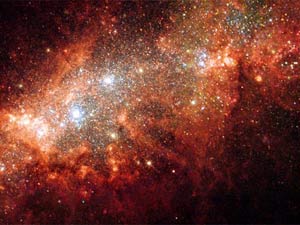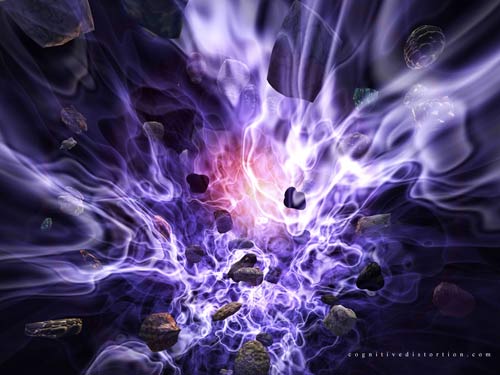Direct observation of a new bright star explosion
The group of British and American scientists first observed directly a very bright new supernova (supernova), occurring in the constellation Belier in the galaxy about 440 million light-years away.
 Supernova is a powerful explosion that ends the existence of some stars, the supernova explosion in the Milky Way seen from Hubble telescope on February 3, 2006 . This is an extremely rare phenomenon - there are only four explosions in the last millennium in our galaxy, and was only discovered later by locating a strange explosion.
Supernova is a powerful explosion that ends the existence of some stars, the supernova explosion in the Milky Way seen from Hubble telescope on February 3, 2006 . This is an extremely rare phenomenon - there are only four explosions in the last millennium in our galaxy, and was only discovered later by locating a strange explosion.
According to an event published in Aug. 31 in the journal Nature , astronomers have observed an unusual gamma radiation that lasts nearly 40 minutes, while a phenomenon like this usually happens takes place in 1 / 1,000 to 1/10 second. This extremely bright new explosion occurred on February 18, 2006.
The radiation phase is so long that the SWIFT satellite of the US Aerospace Agency (NASA) has time to adjust every lens towards the phenomenon and astronomers on Earth can also observe the explosion. by telescopes.
Paul O'Brien, a University of Leicester (UK) professor, a member of the research team, said, ' This gamma radiation is the strangest phenomenon recorded by the Swift satellite . The explosion made a bubble. gas spread and had incredible temperatures: 2 million degrees C '.

A Supernova explosion (Photo: wallnco.free.fr)
According to Professor Andrew Levan, of the University of Hertfordshire (UK), the observed results will allow the study of 'the development of a supernova right from the beginning' and know 'the substances that shoot out in the case. How will the explosion change in the following days'.
According to astronomers, this ultra-bright new explosion is a star that is 20 times larger than the Sun.
- NASA first recorded a giant red star explosion
- The new discovery of cosmic explosion creates gold and platinum
- Photographing the star explosion 12 billion light years from Earth
- The supernova explosion is 10.5 billion light-years away from Earth
- Witness the supernova explosion that seems to be only in sci-fi movies
- Discover the biggest star explosion
- Spectacular supernova explosions in the universe
- Discovering a bright star is a million times more massive than the Sun.
- Close up of dead star
- Capture the moment when the planet exploded brightly
- The discovery of the neutron star collision is 'breakthrough' of 2017
- Unexpectedly, the most remote, lonely neutron star in the universe
 Van Allen's belt and evidence that the Apollo 11 mission to the Moon was myth
Van Allen's belt and evidence that the Apollo 11 mission to the Moon was myth The levels of civilization in the universe (Kardashev scale)
The levels of civilization in the universe (Kardashev scale) Today Mars, the sun and the Earth are aligned
Today Mars, the sun and the Earth are aligned The Amazon owner announced a secret plan to build a space base for thousands of people
The Amazon owner announced a secret plan to build a space base for thousands of people